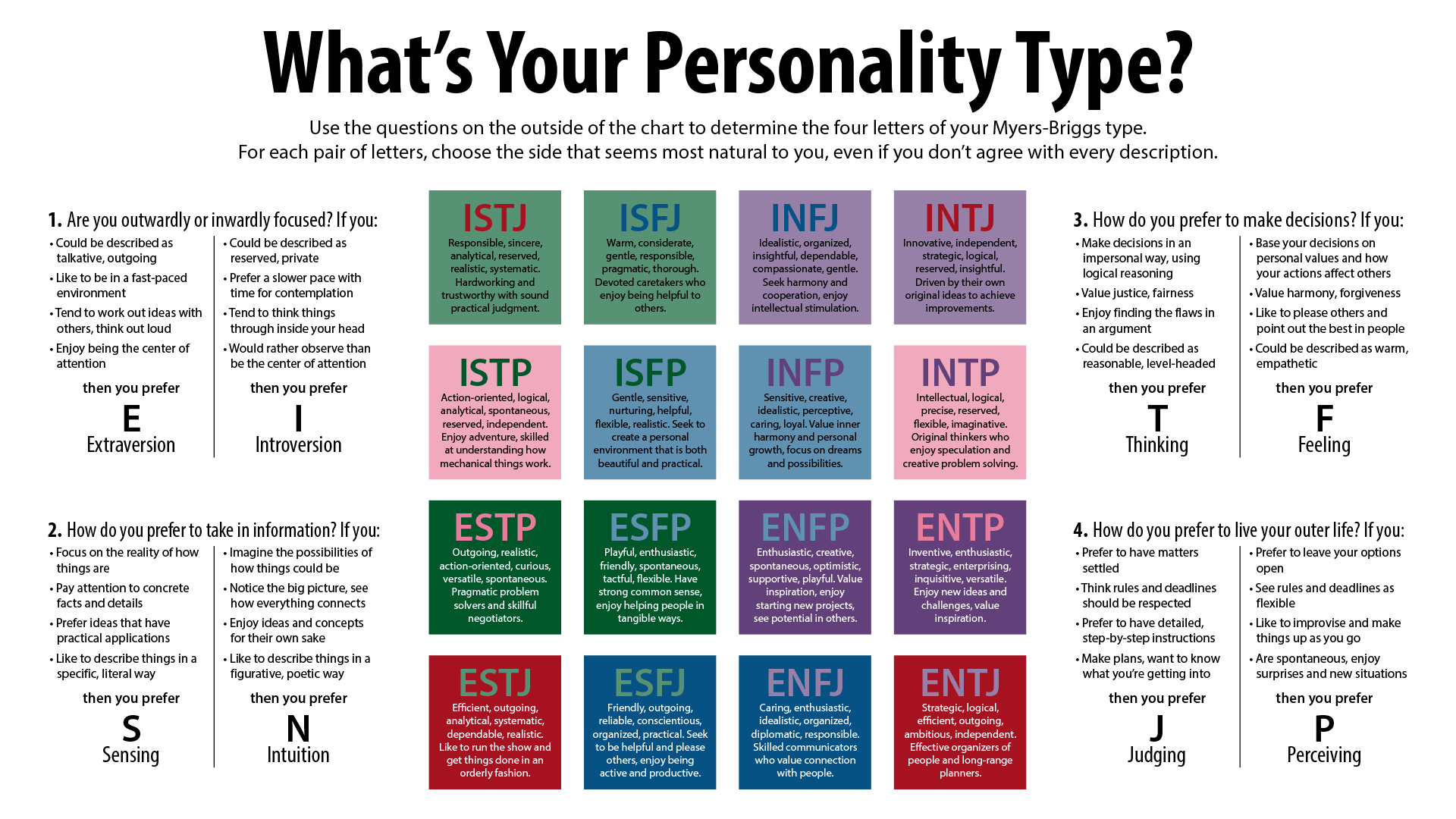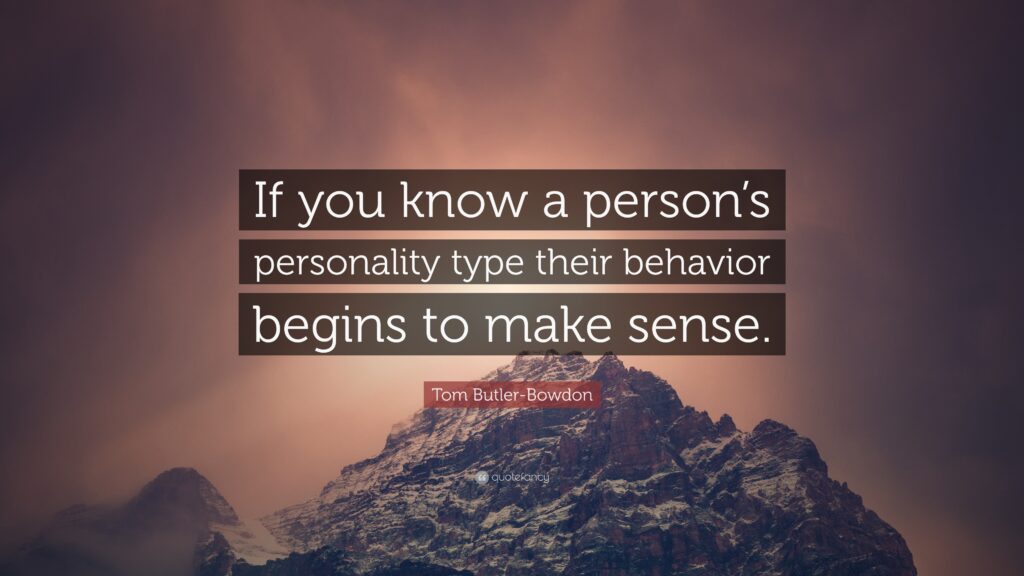Setting goals is an important aspect of personal and professional development, but not all goal-setting strategies work for everyone. Understanding different personality types can help in creating effective strategies that are tailored to each individual.
The Role of Personality in Goal Setting
Personality plays a significant role in how individuals approach and work towards their goals. Different personality types have varying preferences, motivations, and challenges that should be considered when creating effective goal-setting strategies.
One way to understand these differences is through the Myers-Briggs Type Indicator (MBTI) framework. This framework categorizes individuals into 16 different personality types based on their preferences in how they perceive and interact with the world. Each personality type has unique strengths and weaknesses when it comes to goal setting and achievement.

For extraverted-perceiving personality types such as ENFPs, ENTPs, ESFPs, and ESTPs, goal setting is a dynamic and exploratory process. They tend to explore alternative possibilities and redefine their goals continually. These individuals thrive on spontaneity and enjoy mixing work with play. They are motivated by personal growth, innovation, and stepping away from tradition.
On the other hand, introverted-perceiving personality types like INFPs, INTPs, ISFPs, and ISTPs approach goal setting in a more introspective manner. They spend time alone sifting through information and reflecting on possibilities. These individuals prioritize independent work and enjoy conceptualizing and envisioning different strategies. They are driven by a desire for meaning and purpose, often achieving goals beneath the radar.
| Extraverted-Perceiving Personality Types | Introverted-Perceiving Personality Types |
|---|---|
| ENFPs | INFPs |
| ENTPs | INTPs |
| ESFPs | ISFPs |
| ESTPs | ISTPs |
“Extraverted-Perceivers, no matter what the goal, want to argue about it for a while. Sometimes it can be very frustrating for subordinates in such situations to get a clear picture of exactly what the EP’s goals are.” – Otto Kroeger, President of the Association of Psychological Type International
Understanding these different personality types and their unique approaches to goal setting can help individuals tailor their strategies to better align with their preferences and motivations. By considering the strengths and challenges of each personality type, individuals can develop goal-setting techniques that maximize engagement and ultimately lead to greater success in achieving their objectives.
Goal-Setting Tips for Extraverted-Perceiving Personality Types
Extraverted-perceiving personality types have distinct characteristics and preferences when it comes to goal setting. Understanding their approach can help in providing guidance and support for their goal achievement.
One key aspect of extraverted-perceiving (EP) types, including ENFPs, ENTPs, ESFPs, and ESTPs, is their inclination to explore alternatives and possibilities before committing to a specific goal. EPs have an exploratory style and enjoy brainstorming and discussing different ideas with others. They appreciate the opportunity to refine their goals verbally and get feedback from others. It is important to give them the freedom to explore and redefine their goals continually to accommodate their evolving perspectives.
EPs also tend to work in bursts of energy and inspiration, rather than following a methodical approach. They thrive on mixing work with play and have a high tolerance for interruptions. To support their goal achievement, it is beneficial to create an environment that provides variety and allows for flexibility. EPs are more motivated when they can incorporate their personal interests and engage in activities that challenge them mentally or physically.
ENFPs and ESFPs are driven by personal values, and their goals should align with these values to maintain their motivation. These types also benefit from teamwork and human companionship, as it keeps them focused and motivated. On the other hand, ENTPs and ESTPs are motivated by competition and challenge. For these types, incorporating elements of competition or logic into their goals can enhance their motivation and drive.
Overall, effective goal setting for extraverted-perceiving personality types involves providing opportunities for exploration, incorporating variety and challenge, aligning goals with personal values, and fostering a supportive and collaborative environment.
| Key Points | Goal-Setting Tips for Extraverted-Perceiving Personality Types |
|---|---|
| 1. | Encourage exploration and brainstorming of alternative possibilities |
| 2. | Allow flexibility and spontaneity in goal pursuit |
| 3. | Align goals with personal values |
| 4. | Provide opportunities for competition and challenge |
| 5. | Foster a supportive and collaborative environment |
Understanding the unique goal-setting preferences of extraverted-perceiving personality types can contribute to their motivation and success in achieving their objectives. By tailoring goal-setting strategies to cater to their exploratory nature, incorporating variety and challenge, and aligning goals with their personal values, individuals with these personality types can maximize their potential and achieve greater fulfillment in their pursuits.
Goal-Setting Tips for Introverted-Perceiving Personality Types
Introverted-perceiving personality types have their own distinct approaches to goal setting. Understanding their preferences and tendencies can help in creating strategies that align with their strengths and motivations.
INFPs: INFPs tend to start their goals with a clear idea of what they want to achieve. They collect information about possible goals and spend time alone sifting through the information. They explore possibilities either alone or with a trusted friend and then reflect on discussions about goals. They may appear flexible outwardly, but they are often inwardly resolute. INFPs work well independently and are driven by a desire for a meaningful and purposeful life without boundaries and restrictions. Their goals are often driven by an inner vision that they may not even share with others.
INTPs: INTPs, on the other hand, are conceptualizers and theorists who imagine all the possibilities and abstract relationships between things. They start with a firm idea of what they want and then look outward for other perspectives. They often brainstorm ideas with trusted friends and develop many branches of related possibilities and objectives. INTPs prioritize innovation and finding new ways to achieve things, rather than relying on traditional methods.
ISFPs: ISFPs start their goals with a firm decision or viewpoint and then explore ways to physically improve upon their idea. They focus on the details that could make their project or goal stand out. ISFPs value a meaningful and purposeful life without a lot of outside boundaries and restrictions. They tend to achieve goals beneath the radar, surprising others when they accomplish something nobody realized they were aiming for.
ISTPs: ISTPs also start their goals with a firm decision or viewpoint and then explore ways to physically improve upon their idea. They focus on details that could enhance their project or goal. ISTPs are pragmatic and action-oriented, valuing a meaningful and purposeful life without a lot of outside boundaries and restrictions. They enjoy hands-on experiences and often excel in tasks that require physical prowess.
| Personality Type | Goal-Setting Approach |
|---|---|
| INFPs | Start with a clear idea, explore possibilities alone or with a trusted friend, work well independently |
| INTPs | Conceptualize and theorize, prioritize innovation, and find new ways to achieve things |
| ISFPs | Start with a firm decision, focus on physical improvements, and achieve goals beneath the radar |
| ISTPs | Start with a firm decision, focus on physical improvements, excel in tasks requiring physical prowess |
By tailoring goal-setting strategies to the unique preferences and strengths of introverted-perceiving personality types, individuals can enhance their motivation, focus, and overall success in achieving their goals.
Goal-Setting Tips Based on Personality Preferences
People have different personality preferences that influence how they respond to goals. By understanding these preferences, we can customize goal-setting strategies to better align with individuals’ motivations and enhance their chances of success.
One popular framework for understanding personality types is the Myers-Briggs Type Indicator (MBTI). Let’s explore some goal-setting tips based on the preferences of different MBTI personality types:
Extraverted-Perceiving Personality Types (ENFPs, ENTPs, ESFPs, ESTPs)
EPs tend to explore alternatives and possibilities extensively before settling on a singular goal. They work best when they can verbalize their ideas, redefine goals continually, and move towards objectives in bursts of energy and inspiration. To support EPs in goal achievement, allow them the freedom to mix work with play, provide a high tolerance for interruptions, and encourage a variety of experiences throughout the goal-setting process.
ENFPs and ESFPs, who value personal growth and innovation, are more motivated by goals that align with their values. They thrive in a supportive environment where they can work as a team with others. ENTPs and ESTPs, on the other hand, are motivated by challenge and competition. Setting goals that challenge their abilities and allowing them to work autonomously will provide them with the necessary motivation and fulfillment.
Introverted-Perceiving Personality Types (INFPs, INTPs, ISFPs, ISTPs)
IPs typically start with a firm idea of what they want to achieve and then explore possibilities and alternatives. They thrive when they have time alone to reflect and think through their goals. To support IPs, provide them with ample information and resources to explore, encourage them to envision different possibilities, and allow them to work independently. IPs are often inwardly resolute but may appear flexible on the surface.
INFPs and INTPs, known for their imaginative and conceptual thinking, benefit from brainstorming sessions and envisioning future possibilities. ISFPs and ISTPs, who are more focused on improving their ideas and projects, benefit from attention to detail and practical enhancements. These individuals often work best when they can physically manipulate their goals and projects to make them stand out.
Incorporating these goal-setting tips based on personality preferences can help individuals stay motivated, engaged, and focused on achieving their objectives. Remember to adapt these strategies to suit the preferences and needs of each individual, as everyone has their own unique approach to goal setting and achievement.
This article was written by DeveshSharma, Empowering Industry Leaders to Exit on Their Terms | Maximizing Business Value & Personal Freedom | 25+ Years, 100s of Deals, ONE GOAL: Your Victory ♟️ | Chess Strategist in Business & Life
